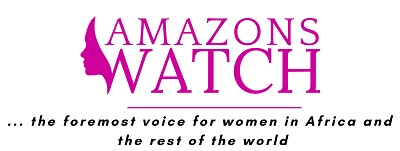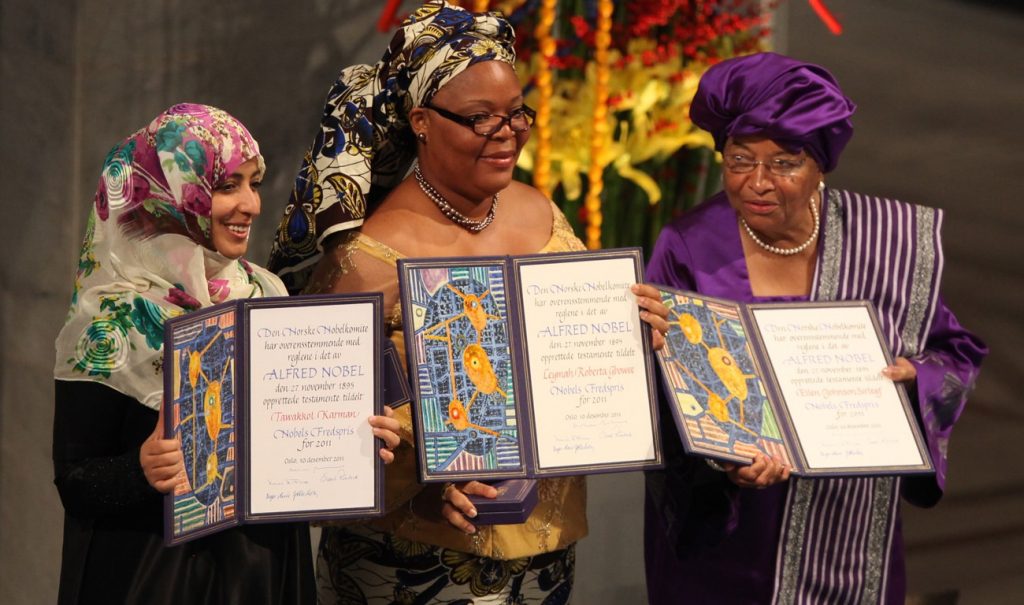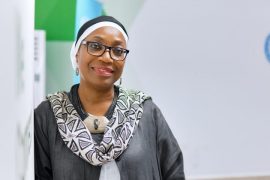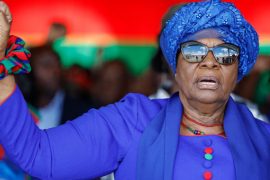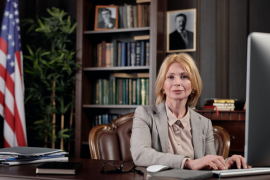By Joshua K. Ogbonna.
Politics has never been a strong point for women in particular regions or countries, but with democracy taking the center stage in most elective processes across the globe, a lot of women are coming into the picture and this was at its peak in 2017. The global movement for gender equity is meant to bring about social change leading to increased political participation by women. Legislating equality does not instantly guarantee a society’s acceptance of it. In Africa, Asia, and the Middle-east the focus of the women folk has largely been relegated to household upkeep but that narrative is being corrected by countries promulgating several women’s bill of rights and the active involvement in the political process – seeking elective positions and being voted for.
According to a Chinese proverb, “Women hold up half the sky” and that has become internationally adopted to affirm women’s equal contribution to society and the struggle for their rights to equity in health, education, economic opportunities, and political participation. The recent prosperity in East Asia has narrowed the gender gaps, women’s political participation but this has not totally reflected in the pace of economic development. Although human development is a necessary factor that results in women’s political empowerment, it is not a one-size-fits-all solution. Of great importance are customary practice, healthy socioeconomic conditions, conducive political systems, and gender-friendly political cultures enable women’s political participation and leadership. These factors combine to have different effects in particular national and local contexts, creating significant variation across East Asia.
Notably, in Mongolia, Nepal, Timor-Leste, Afghanistan, New Caledonia, and the nonindependent territories of French Polynesia, gender quotas and reservations have significantly improved women’s political representation at national and local levels. The repressive cultures in the past in these countries have given way to the parity principle which avoids the use of quotas and reservations to limit women’s representation rather than to achieve equal representation. For gender quotas to be successfully adopted, women’s movements must be consolidated and supported by the governments of the countries, political bias must be treated properly because it is the major hindrance to proper political participation.
In a research paper presented at the African Studies Association, at its annual meeting held in Philadelphia, PA, Aili Mari Tripp, a Professor of Political Science, Gender & Women’s Studies at the University of Wisconsin-Madison opined that “Gender and politics in Africa is an emerging field of study which poses many new and exciting possibilities for new scholarly agendas. There is still a lot we don’t know, including the role of traditional authorities, women in local politics, women, and decentralization, and the constraints and possibilities for women in authoritarian and semi-authoritarian/semi-democratic regimes. We need more historical work. But perhaps above all, we don’t have a good sense yet of what difference women in power make, particularly in authoritarian and hybrid regimes. We have seen increases in woman-friendly legislation in countries like Uganda being advanced by the Women’s Parliamentary Caucus. At the same time, the disappointing persistence of nepotism and patronage politics and corruption in a female-headed country like Liberia shows just how intransigent old habits can be. The increase of women in politics signifies that norms have changed and are changing, and it represents a step toward greater equality. If women are not represented politically, their voices will not be heard and their interests are less likely to be advanced.
Nevertheless, women enter institutions with long histories and established ways of doing things. Although some women will challenge the status quo and will see themselves as advocates for women’s rights, many become absorbed into these same institutions and behave much like the male legislators, ministers, and presidents that came before them. It is these processes that we need to better understand.”
Africa has taken the lead, far more than Asia and Europe which use to be a stronger ground for female parliamentarian and politicians. African countries have some of the world’s highest rates of representation.The admirable reforms of president Paul Kagame in Rwanda has earned Rwanda the world’s highest ratio of women in parliament. In the 2003 election, 48 percent of parliamentary seats went to women. In the next election — 64 percent. Today Rwandan politics is cited as a model of gender inclusiveness. In Senegal, Seychelles and South Africa, more than 40% of parliamentary seats are held by women, while in Mozambique, Angola, Tanzania, and Uganda over 35% of seats are occupied by women. On the other hand, Women in the U.S. Congress 2017, In 2017, 105 (78D, 27R) women hold seats in the United States Congress, comprising 19.6% of the 535 members; 21 women (21%) serve in the United States Senate, and 84 women (19.3%) serve in the United States House of Representatives.
The parliamentary patterns are evident in other areas as well. Ellen Johnson-Sirleaf became the first elected woman president in Africa in 2005, Joyce Banda was also the president of Malawi very recently and President Ameenah Gurib- Fakim of Mauritius. There have been nine female prime ministers in Africa since 1993, including Luisa Diongo in Mozambique, who served for six years. Since 1975 there have been 12 female vice presidents like Wandira Speciosa Kazibwe in Uganda, also countries like Mauritius, Zimbabwe, Gambia and Djibouti, South Africa, Malawi, Zimbabwe, and Burundi have had female vice presidents. There are female speakers of the house in one-fifth of African parliaments, which is higher than the world average of 14%. Women are taking over key ministerial positions in defense, finance, and foreign affairs, which is a break from the past when women primarily held ministerial positions in the so-called ‘softer’ ministries of education, community development, sports, and youth. Today, South Africa has had a female defense minister, Nosiviwe Mapisa-Nqakula, while Kemi Adeosun serves as Nigeria’s finance minister succeeding Ngozi Okonjo-Iweala and Esther Nenadi Usman.
Women are similarly visible in regional bodies, holding 50% of the African Union parliamentary seats. Gertrude Mongella served as the first president of the Pan African Parliament and in July 2012, South Africa’s Nkosazana Dhlamini-Zuma took over the leadership of the African Union Commission. Even at the local level, women make up almost 60 percent of local government positions in Lesotho and Seychelles, 43 percent of the members of local councils or municipal assemblies in Namibia, and over one-third of local government seats in Mauritania, Mozambique, Tanzania, and Uganda. More women than men vote in countries like Botswana, Cape Verde, Lesotho, South Africa and Senegal, although overall rates for men seem to be about 5% more in countries surveyed by Afrobarometer.
These patterns are evident in the judiciary as well with the advancement of women judges at all levels. African women judges are even making it into the international arena with Fatou Bensouda from Gambia holding the post of chief prosecutor in the International Criminal Court since 2012. Interestedly, all but one of the current five African judges on the ICC are women.
These global sweeping changes must be embraced can be explained by the following interconnected features: 1) the economic stability of the concerned region; 2) the development of pro-gender equality groups, particularly the giveaway the military and most dictatorial societies to more opened administrations, along with the emergence of autonomous women’s movements that accompanied this opening; 3) pressures from global bodies like the UN agencies, regional organizations, donors and other external actors that influenced the state.
